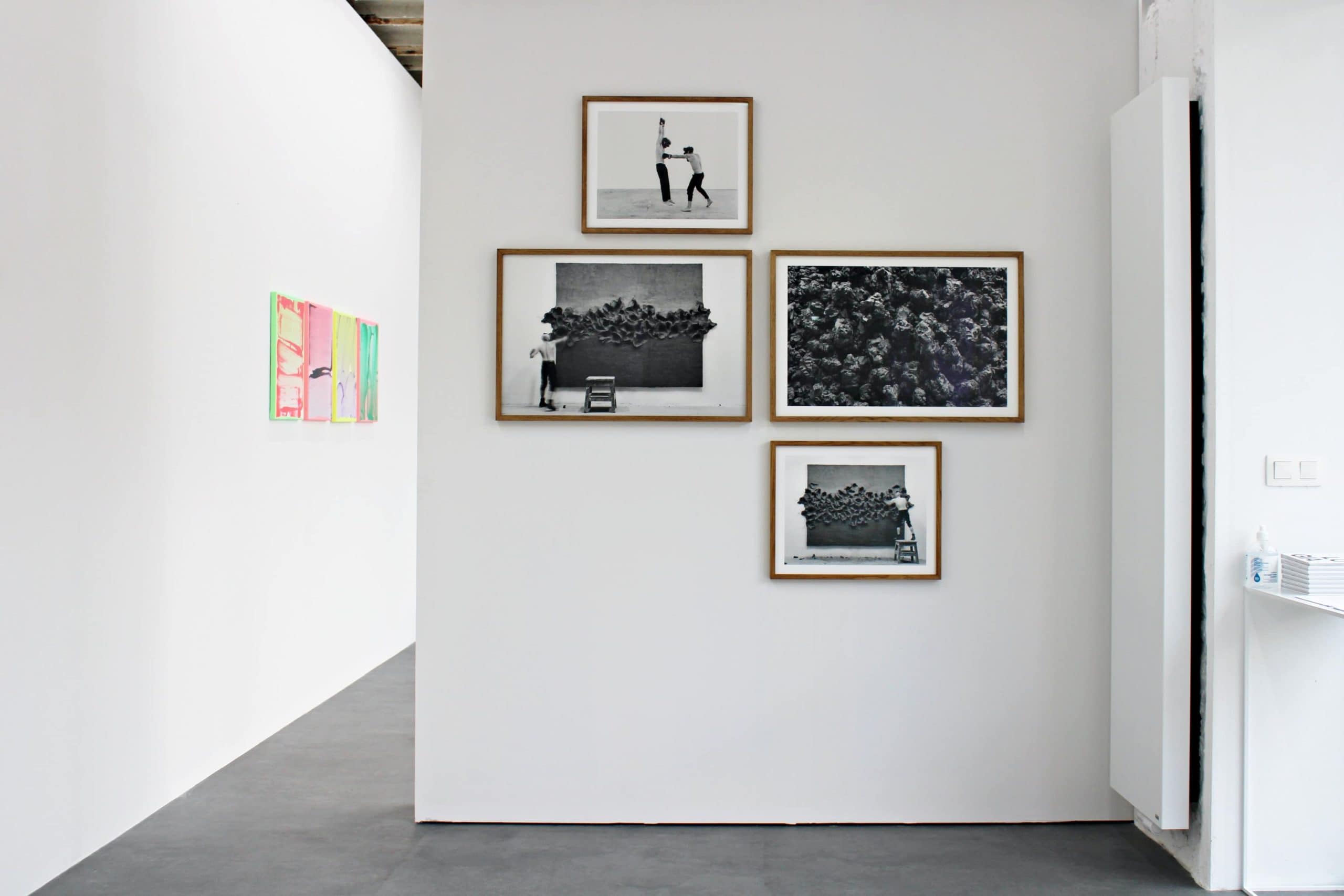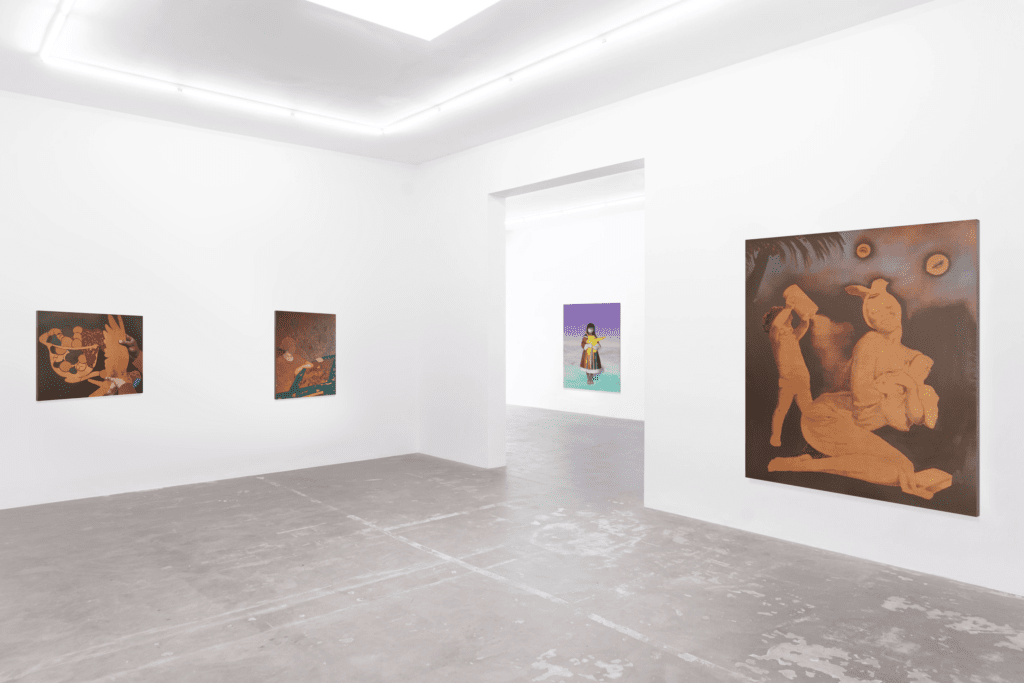
Mark-Making: 5 Abstract Painters You Need To Know
Trends in Contemporary Art
When it comes to the industry-accepted glossary of the art world, we encounter several exhibition-related terms you need to know. Depending on the number of artists and the venue, we can identify eight different types of exhibitions.
The different types of exhibitions include solo exhibitions, duo exhibitions, group exhibitions, institutional exhibitions, museum exhibitions, retrospective exhibitions, art event exhibitions, and online exhibitions.
These nine types are the most common exhibitions in the art world and are very frequently used terms. As a result, their definitions must be ready knowledge for anyone who aims to navigate the art world as an expert. So, let’s talk about their definition, organization, and importance more in-depth.
First on our list is the coveted solo exhibition. So, what is a solo exhibition or solo show?
The term solo exhibition is used when the art exhibition consists of only one artist. Solo exhibitions mainly take place in a gallery context. The art gallery as the venue for solo exhibitions has a long-standing tradition throughout the history of art galleries. It is still, up to today, one of the most common types of shows in galleries.
A solo exhibition at an art gallery is a significant milestone in an artist’s career. During these exhibitions, the artist is the man or woman of the hour, often showcasing a specific series of works or from a particular period in the artist’s career—preferably showing recent works. Art galleries are commercial enterprises. They need to promote their artists and sell their work. The solo exhibition has proven to be the ideal format to generate a real buzz, interest, and exposure for their artists, hence being one of the favorite types of exhibitions for both artists and galleries.
A solo exhibition can also take place in an institutional context. Think of a solo presentation of one artist in an art space, public library, or museum. By doing so, a solo exhibition can also be an institutional or museum exhibition. And, if the museum solo exhibition shows works representative of the artist’s entire career, one can refer to or label the show as a retrospective exhibition—but we’ll get back to those terms later in our article.
If you would like to see an example of a solo exhibition, you can find one of the solo exhibitions we organized with CAI Gallery, such as Tonino Mattu: The Golden Days or Remus Grecu: Night Rainbows.
Next, we have the duo exhibition. What is a duo exhibition or ‘two-person show’?
In the same vein as the solo exhibition, the duo exhibition is determined by the number of artists in the show—meaning the exhibition consists of only two artists. A duo exhibition consists of an artistic dialogue between two artists who are the main subject of a single exhibition. As with the solo exhibition, the art gallery is the designated venue for a two-person show.
Nevertheless, it is possible—however less common—to encounter a duo exhibition in an institutional context. By doing so, the duo exhibition can also be an institutional or museum exhibition. The combination with the term retrospective is no longer possible as a retrospective exhibition can only consist of one artist.
If you want to see an example of a duo exhibition, feel free to discover one of the solo exhibitions we organized with CAI Gallery, such as Traces: Aron Barath & Szilard Gaspar.

After ‘solo’ and ‘duo,’ do we have a trio exhibition? I am afraid not. Our next term when it comes to types of exhibitions is the group exhibition. So, what is a group exhibition?
A group exhibition is an art exhibition consisting of at least three artists or more. As with the solo and duo exhibitions, the terminology is based on the number of artists. Once again, the art gallery is the ideal venue for a group exhibition. It allows the gallery to present multiple artists they represent in the same show—often in combination with one or two new faces to make things more exciting and try out some new artists. But generally speaking, and depending on the art gallery, solo exhibitions have the upper hand in the exhibition program of galleries.
The group exhibition is also ideal for institutional venues—in particular, museum exhibitions. Institutions often pursue educational goals. The group exhibition enables the institution, museum, or curator, to curate a group of artists and artwork to support their (socio-political) message or (art-historical) topic.
If you’d like to see an example of a group exhibition, you can find one of the group exhibitions we organized with CAI Gallery, such as Thank You For The Delay and Elusive Reality.
This brings us to the term institutional exhibition; what are institutional shows?
Institutional exhibitions are art exhibitions at an institution, such as museums, auction houses, curatorial institutions, art spaces, artist estates, foundations, mega-galleries, artist-run spaces, art schools, and private collections.
Instead of the number of artists, the institutional exhibition is a term determined by the show’s venue. As our recital above illustrates, art institutions include a wide array of organizations and entities and even deserve a separate article on the different types of art institutions.
Every institution has a different objective. Some institutions have permanent collections on display; others loan works from private collections; others show available work from living artists; and others own the artworks and exhibit them. One of the most important and best-known institutions is the museum institution, which brings us to our next type of exhibition.
Institutional exhibitions are true milestones in the career of an artist. They are an indicator of not only receiving recognition from the commercial art world but also a sign of validation from the critical art world—think of curators, art historians, and art critics. As a result, as soon as you have an institutional exhibition on your resume, your profile as an artist will become a lot more convincing and exciting for new galleries and collectors.
If you want to see an example of an institutional exhibition, you can read our exhibition feature on Anri Sala at the Pinault Collection, Bourse de Commerce in Paris here.

The museum exhibition is arguably the best-known type of exhibition in public opinion.
A museum exhibition is an art exhibition taking place in a museum. This definition is arguably the most self-explanatory one. As with institutional exhibitions, the terminology is very literally determined by the venue of the show.
But with museum exhibitions, we came across various types. Most often, what characterizes a museum is its permanent collection. As a result, in most cases, the museum will have a permanent exhibition showcasing the best pieces from its collection—think of the Louvre in Paris having Da Vinci’s Mona Lisa on display permanently or Picasso’s Guernica at the Museo Nacional de Reina Sofia in Madrid, Spain.
But simultaneously, most museums will also curate a program of temporary exhibitions. For instance, the Museum of Modern Art (MoMA) in New York and their upcoming exhibition Signals: How Video Transformed the World bringing together a group of artworks from various artists such as Dara Birnbaum or Nam June Paik discussing the omnipresence of video and screens and how it transformed the world.
As discussed earlier in our article, museum exhibitions often pursue educational and academic objectives. The show mentioned above is an excellent example of how contemporary art can be important, and the role institutions such as museums play in improving our understanding of the world and inciting critical minds.
Museum exhibitions can communicate information, research results, socio-political messages, and more. Think of art-historical overview exhibitions canonizing a specific art historical period or the life and work of a single artist. This brings us to the following type of exhibition; the retrospective exhibition.
A retrospective exhibition at a major institution is what sets the established artist apart from the rest. But what is a retrospective exhibition exactly?
A retrospective exhibition is a one-person show representative of the entire oeuvre, life, and career of the artist in question, most often taking place later on in the artist’s life, with the museum being the venue.
The term retrospective is derived from ‘in retrospect’—meaning ‘when looking back.’ As a result, the retrospective is a moment of looking back at a specific artist’s illustrious career. It is a moment to canonize their work and importance for the art world, hence being a significant honor and form of recognition.
Think of the recent and already iconic and groundbreaking retrospectives by Gerhard Richter or Louise Bourgeois at Tate Modern in London. Retrospectives at institutions of this standard are arguably the equivalent of graduating magna cum laude. They are a symbolic lifetime achievement honor and overview and a guarantee of being permanently canonized in art history.

Next, we have event-related exhibitions. So, What are art event exhibitions?
Art event exhibitions are exhibitions during art events in which the exhibition is one of many exhibitions at the art event, such as art fairs, biennales, and art festivals.
In this case, the terminology is once again determined by the show’s venue. And, as with institutional exhibitions, art event exhibitions come in various shapes and forms. Most often, these events take place frequently on an annual, biannual, or triannual basis.
These events consist of numerous exhibitions, all co-occurring near one another. Think of art festivals such as the annual festival of the Cultural Capitals of Europe, where a city is highlighted as a cultural capital, organizing numerous exhibitions throughout the city. Another type of art event exhibition is, of course, the biennales and triennials. Some of the most famous examples are arguably the biennale of Venice, Documenta in Kassel, and the Whitney Biennial.
And last but not least, we have the art fair exhibitions. In this case, the show takes place at a booth during an art fair. Art fairs consist of numerous exhibitions organized by the participating galleries, all under the same roof—making it a fantastic opportunity to consume an enormous amount of top-notch art. Examples of the most important fairs include ArtBasel, TEFAF, and Frieze Art Fair.
We conclude with our eighth and final type of exhibition; online exhibitions.
Online exhibitions are virtual art exhibitions, meaning the show does not take place in a physical exhibition space but only exists digitally or online.
The importance and frequency of online exhibitions have increased tremendously over the past few years—particularly during the Covid-19 crisis. Today, it has become very common for art galleries to have a Viewing Room—a web location designated for online exhibitions. It offers the possibility to curate extra exhibitions and generate more online sales, making online exhibitions an ideal strategy for commercial art galleries.
If you’d like to see an example of an online exhibition, you can discover one of the online exhibitions we organized with CAI Gallery‘s viewing room, such as Allegorical Conditions and Marco Reichert: Pareidolia.

Last Updated on July 12, 2024

Trends in Contemporary Art

A Complete Guide

Touching the Invisible

A Reasoned Anthology